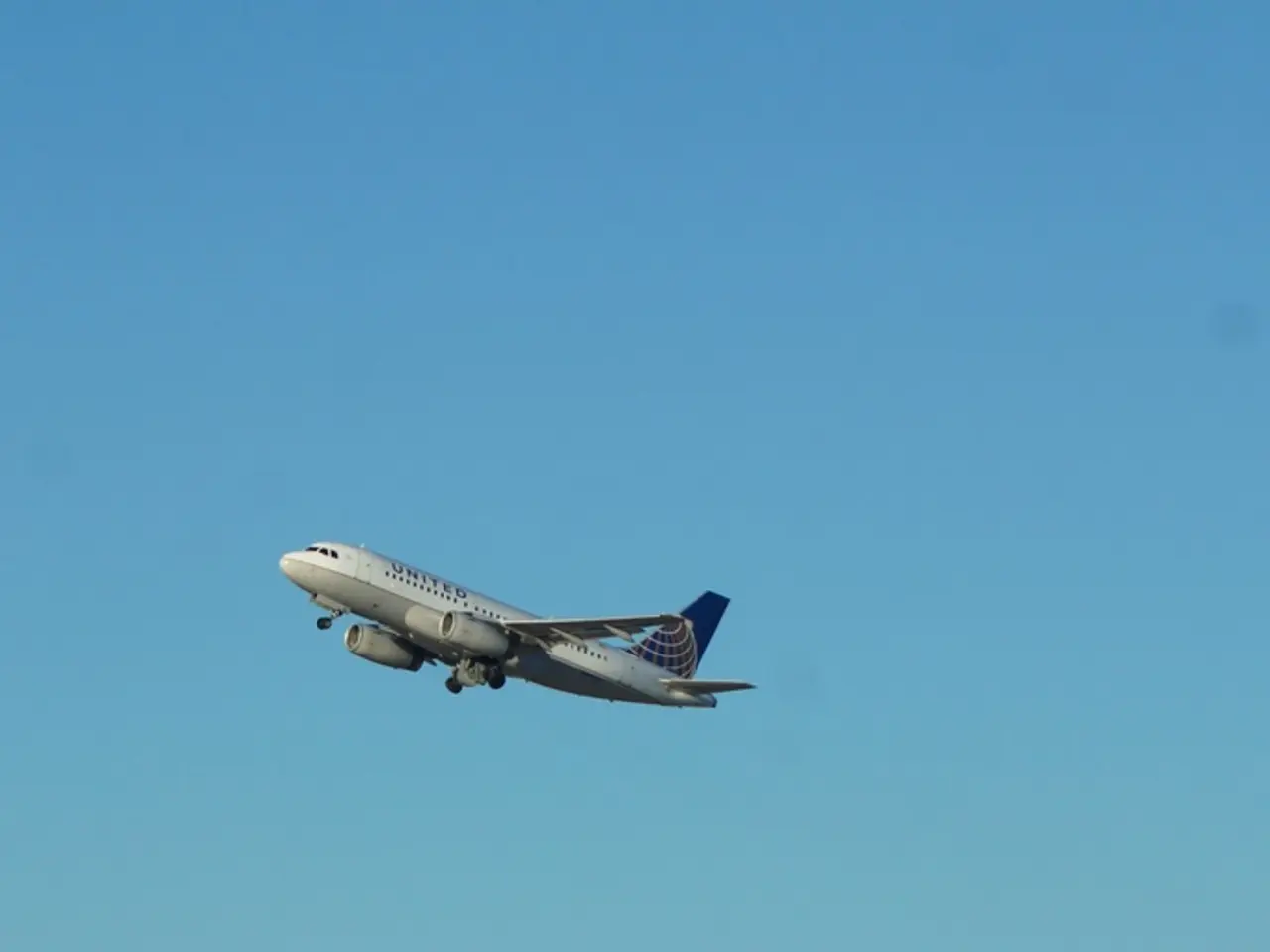Employing data to boost narratives concerning the local aviation company and airport sector
In the bustling state of Arizona, two major airports - Phoenix Sky Harbor International Airport and Tucson International Airport - play significant roles in the local economy and job market. Each year, Sky Harbor handles over 45 million passengers and supports around 35,000 jobs, contributing billions to the local economy, while Tucson serves about 5 million passengers and supports approximately 4,000 jobs.
For business reporters seeking valuable insights, these local airports' websites are a treasure trove of information. Sky Harbor posts data monthly and releases annual data in the first few months for the previous year, while Tucson's data is readily available as well. By sorting these databases by location and airline, reporters can gain insights into departure schedules, performance, and even identify which airlines are most often on time and which may struggle with delays.
This data can be further analysed to draw correlations between an airline's standard delay time, revenue, and popularity. For instance, if an airline consistently ranks high in on-time performance, it may attract more passengers due to its reliability, potentially boosting its revenue. On the other hand, airlines with frequent delays may face a drop in popularity and revenue as a result.
Comparing multiple airports within a state or local area can also yield interesting findings. This data can help determine which airport has the most airline activity or passengers and which may have the greater economic impact. For example, a comparison report of Sky Harbor and Tucson airports could reveal interesting insights about passenger traffic, economic contributions, and airline activity.
The Federal Aviation Administration (FAA) and the United States Bureau of Transportation Statistics also offer a wealth of aviation data. The FAA's website provides on-time and delay causes, operations, and rankings, while the Bureau of Transportation Statistics offers a repository of data related to airlines and airports, along with a page of quick national facts for comparing local airports or airlines.
Moreover, the aviation page of the Bureau of Transportation Statistics includes databases used and tables available from various government forms and agencies. The TranStats database directory allows searching for data by mode of transportation, with aviation data listed. Reporters can also use the FAA's Air Traffic Activity System to find airport-specific and federal data.
With data analysis software and know-how, it's possible to determine the standard delay time for each airline over a certain period of time, observe changes in this standard delay time over the years, and identify potential trends. For a deeper understanding of the economic impact of airports, Arizona State University's W.P. Carey School of Business has conducted an economic impact study on Phoenix Sky Harbor International Airport, which can help strengthen some stories.
In conclusion, local airports, government agencies, and universities offer a wealth of data for business reporters to explore and analyse. By sorting, comparing, and analysing this data, reporters can uncover trends, identify correlations, and provide valuable insights into the aviation industry and its impact on local economies.
Read also:
- Peptide YY (PYY): Exploring its Role in Appetite Suppression, Intestinal Health, and Cognitive Links
- Toddler Health: Rotavirus Signs, Origins, and Potential Complications
- Digestive issues and heart discomfort: Root causes and associated health conditions
- House Infernos: Deadly Hazards Surpassing the Flames








